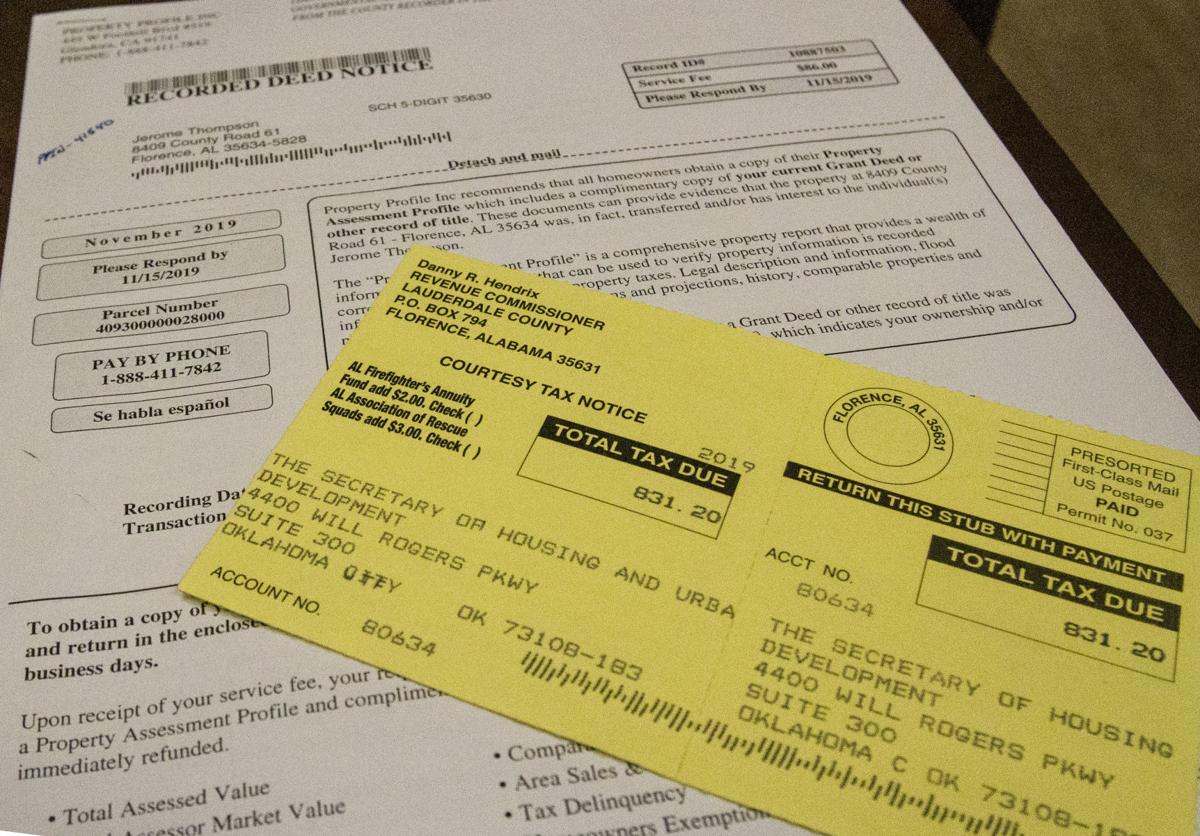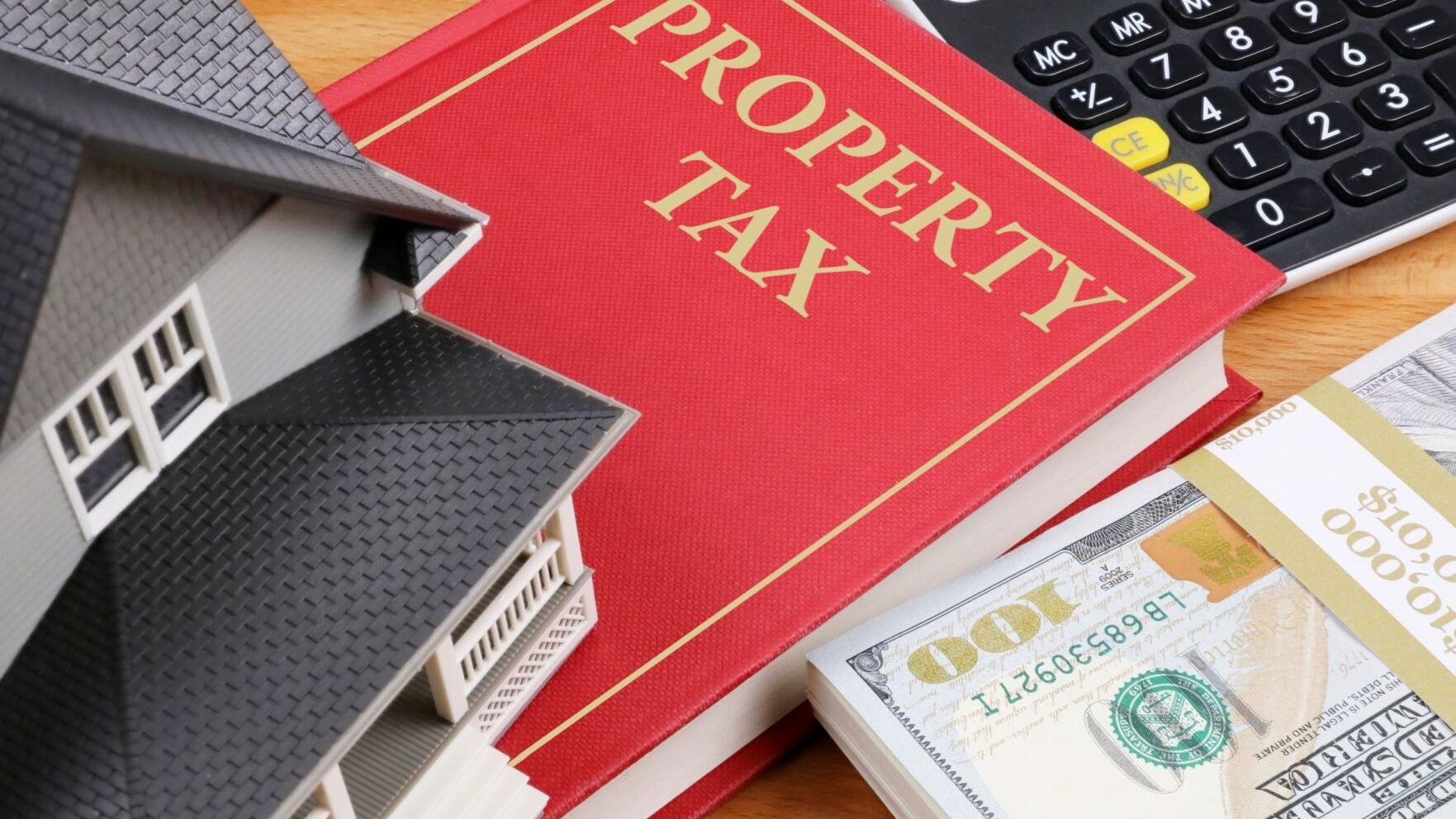Home>Home Maintenance>How To Obtain A Property Assessment In Pennsylvania


Home Maintenance
How To Obtain A Property Assessment In Pennsylvania
Modified: March 6, 2024
Learn how to obtain a property assessment in Pennsylvania and ensure your home maintenance is up to date. Discover the steps and regulations to follow.
(Many of the links in this article redirect to a specific reviewed product. Your purchase of these products through affiliate links helps to generate commission for Storables.com, at no extra cost. Learn more)
Introduction
Obtaining a property assessment in Pennsylvania is an important step for homeowners and property owners. A property assessment determines the value of a property for tax purposes and can impact the amount of property taxes you pay. It is crucial to understand the assessment process and how to navigate through it to ensure that your property is assessed accurately.
In this article, we will guide you through the process of obtaining a property assessment in Pennsylvania. We will provide you with the necessary steps and information to follow, ensuring that you are well-prepared and knowledgeable when it comes to property assessments.
Whether you are a new homeowner, have recently made improvements to your property, or believe that your current assessment is inaccurate, this guide will help you understand how to obtain a property assessment and navigate any appeals process if necessary.
It’s important to note that the property assessment process can vary slightly depending on the county in which your property is located. However, the general steps outlined in this article will give you a solid foundation for understanding the process and taking the necessary actions.
Before we dive into the details, let’s explore why property assessments are important and how they can impact your financial responsibilities as a homeowner or property owner.
Key Takeaways:
- Understanding property assessments in Pennsylvania is crucial as they impact your taxes, property value, and eligibility for financial programs. Gathering accurate information and engaging with the assessment office are key steps in the process.
- If you believe your property assessment is inaccurate, you have the right to appeal. Reviewing, verifying, and actively participating in the assessment process can help ensure a fair and accurate assessment of your property’s value.
Step 1: Understand the Importance of Property Assessments
Before embarking on the process of obtaining a property assessment in Pennsylvania, it’s crucial to understand why property assessments are significant. A property assessment determines the value of your property for tax purposes, which ultimately affects the amount of property taxes you pay.
Property taxes play a vital role in funding various local government services, such as schools, emergency services, road maintenance, and public infrastructure. The assessed value of your property directly impacts the amount you contribute to these essential services.
Accurate property assessments ensure a fair distribution of the tax burden among property owners. Without proper assessments, some property owners may end up paying more than their fair share, while others may pay less. By obtaining an accurate assessment, you ensure that you are paying your fair share of property taxes.
Additionally, property assessments are crucial when buying or selling a property. Potential buyers use property assessments to evaluate the value of a property and determine if it aligns with the asking price. Sellers may also rely on assessments to set a fair listing price for their property.
Moreover, property assessments can impact your eligibility for certain financial programs or tax exemptions. For example, some states offer property tax exemptions for senior citizens, veterans, or individuals with disabilities. A proper assessment is necessary to determine your eligibility for these benefits.
To summarize, understanding the importance of property assessments is essential because:
- They determine the amount of property taxes you pay
- They ensure a fair distribution of the tax burden among property owners
- They help buyers and sellers in evaluating property values
- They impact your eligibility for financial programs or tax exemptions
Now that we’ve established the significance of property assessments, let’s move on to the next step: gathering the necessary information.
Step 2: Gather Necessary Information
Before proceeding with the property assessment process in Pennsylvania, it’s important to gather all the necessary information related to your property. This information will help ensure a smooth and accurate assessment of your property’s value.
Here are some key pieces of information you should gather:
- Property Documentation: Collect all relevant documentation related to your property, such as deeds, title documents, and any previous assessment records. These documents will provide important details about your property’s history and ownership.
- Property Improvements: Make a list of any significant improvements or renovations done to your property, along with the dates and costs of each improvement. This information will help assessors verify the value added to your property through these improvements.
- Property Features: Take note of any unique features or amenities your property possesses that may affect its value. This could include factors such as a swimming pool, a garage, a large backyard, or any other desirable features that can contribute to a higher property value.
- Comparable Sales: Research recent sales of similar properties in your area. These comparable sales, or “comps,” can provide valuable insights into the market value of your property. Look for properties with similar square footage, number of bedrooms and bathrooms, and location.
- Property Boundaries: Ensure you have accurate information regarding your property boundaries. This can be obtained from your property survey or plat map. Accurate boundary information will help assessors properly evaluate your property’s size and location.
- Property Income and Expenses (if applicable): If you own a rental property or commercial property, gather financial information about the property’s income and expenses. This information can be useful for income-generating property assessments.
Gathering all these necessary pieces of information will enable you to provide accurate and comprehensive details about your property during the assessment process. It will also help to expedite the overall assessment process and ensure that your property’s value is correctly determined.
With the necessary information in hand, it’s time to move on to the next step: determining the appropriate assessment office for your property.
Step 3: Determine the Appropriate Assessment Office
Once you have gathered all the necessary information about your property, the next step is to determine the appropriate assessment office to file your property assessment. The assessment office is responsible for evaluating property values and determining the assessed value for tax purposes.
In Pennsylvania, the assessment process is administered at the county level. Each county has its own assessment office that handles property assessments. To determine the correct assessment office for your property, you can:
- Check the County Website: Visit the official website of your county or search for the county government’s website. Look for a section or department specifically dedicated to property assessments. The website should provide contact information and relevant details about the assessment office.
- Contact the County Assessor: If you’re unable to find the information on the county website or have any doubts, contact the county assessor’s office directly. The assessor’s office can provide you with the correct contact information and guide you through the assessment process.
- Ask Local Real Estate Professionals: Reach out to local real estate agents, brokers, or property managers in your area. They have experience dealing with property assessments and can provide valuable insights and guidance. They may also be aware of any changes or updates in the assessment office’s location or procedures.
- Attend Local Workshops or Seminars: Some counties offer workshops or seminars on property assessments and taxation. Attending these events can provide you with firsthand information about the assessment office and the assessment process. Check the county’s website or local community boards for any upcoming events.
It’s important to determine the correct assessment office to ensure that you submit your property assessment to the appropriate authorities. This will help streamline the assessment process and avoid delays or confusion associated with submitting your assessment to the wrong office.
Once you have identified the correct assessment office for your property, it’s time to move on to the next step: visiting the assessment office.
Step 4: Visit the Assessment Office
After determining the appropriate assessment office for your property in Pennsylvania, the next step is to physically visit the assessment office. A visit to the assessment office will allow you to have face-to-face interactions with the assessors and gain a better understanding of the assessment process specific to your county.
Here are some important points to keep in mind when visiting the assessment office:
- Office Hours: Before heading to the assessment office, check their official website or call ahead to confirm their office hours. Office hours may vary, and it’s important to visit during their designated hours to ensure you can meet with assessors and receive assistance.
- Prepare Your Documents: Bring all the relevant documents and information you gathered in Step 2. This includes property documentation, receipts for improvements, and any other supporting documents. Having all the necessary paperwork readily available will help facilitate the assessment process.
- Ask Questions: When you visit the assessment office, don’t hesitate to ask questions. Seek clarification on any aspects of the assessment process that you may be unsure about. The assessors are there to assist you and provide guidance, so take advantage of their expertise.
- Take Notes: During your visit, it’s helpful to take notes on any important information or instructions provided by the assessors. This will serve as a reference for you as you progress through the assessment process.
- Make Personal Observations: While at the assessment office, make personal observations about the professionalism and helpfulness of the staff. This will give you a sense of the level of service they provide and their willingness to assist you throughout the assessment process.
Visiting the assessment office allows you to establish a personal connection and establish rapport with the assessors. It also provides an opportunity to gain a better understanding of the specific requirements and procedures followed by the assessment office in your county.
By physically visiting the assessment office, you can ensure that you are well-informed and prepared for the next steps in the property assessment process. You can now move on to Step 5: requesting a property assessment.
Read more: How Do I Obtain Tax Property Assessment
Step 5: Request a Property Assessment
Once you have visited the assessment office and gathered all the necessary information and documentation, it’s time to formally request a property assessment for your property in Pennsylvania. The assessment office will initiate the assessment process based on your request.
Here’s how you can request a property assessment:
- Contact the Assessment Office: Reach out to the assessment office either by phone, email, or by visiting their office again. Inform them that you would like to request a property assessment for your property. Provide them with your property details and any necessary information they may require.
- Follow Their Instructions: The assessment office will guide you on the specific steps and procedures involved in requesting a property assessment. They may provide you with forms to fill out or ask you to submit certain documents. Follow their instructions carefully to ensure a smooth and efficient assessment process.
- Submit the Request: Once you have completed the required forms and gathered all the necessary documents, submit your request to the assessment office. Ensure that you have included all the relevant information and supporting documentation to assist the assessors in evaluating your property accurately.
- Keep a Copy: Make sure to keep a copy of your request and any submitted documents for your records. This will serve as proof of your request and will be valuable in case of any future inquiries or appeals related to your property assessment.
It’s important to note that each assessment office may have its specific procedures and requirements for requesting a property assessment. Make sure to closely follow their instructions and comply with any guidelines they provide.
By formally requesting a property assessment, you initiate the process and enable the assessors to evaluate your property’s value accurately. Once your request is submitted, the assessment office will proceed with reviewing your property’s information and validating the necessary details.
With the property assessment request submitted, you can now move on to Step 6, which involves providing any required documentation to support your assessment.
You can obtain a property assessment in Pennsylvania by contacting the county assessor’s office or using their online tools to search for your property and view its assessment value.
Step 6: Provide Required Documentation
After requesting a property assessment from the assessment office, the next step is to provide any required documentation to support your assessment. These documents will help the assessors validate the information you provided and accurately assess the value of your property in Pennsylvania.
Here are some common types of documentation that may be required:
- Property Ownership Documents: Provide copies of your property’s ownership documents, such as deeds or title certificates. These documents verify your legal ownership of the property and are essential for conducting a proper assessment.
- Building Permits and Certificates: If you have made any significant improvements or renovations to your property, provide copies of the building permits and certificates of occupancy. These documents show that the improvements were done following proper regulations and can impact the assessed value.
- Receipts for Property Improvements: If you have made improvements or repairs to your property, gather receipts or invoices that detail the costs incurred. This documentation validates the expenses associated with these improvements and can be used to support an increase in the assessed value.
- Photographs or Videos: Provide visual documentation of your property, including both its exterior and interior. Clear photographs or videos can provide evidence of the property’s condition, features, and any improvements that have been made. These visuals can assist the assessors in accurately assessing the property’s value.
- Comparable Sales Data: If you have researched comparable sales (comps) of similar properties in your area, provide this data to the assessment office. It can serve as evidence of the market value of your property and support your assessment request.
- Income and Expense Statements (for income-generating properties): If your property generates rental income or is used for commercial purposes, you may be required to submit income and expense statements. These documents provide financial information and assist in evaluating the property’s value based on its income potential.
Make sure to review the specific requirements provided by the assessment office for submitting documentation. Follow their instructions carefully and organize your documents in a clear and orderly manner to ensure a smooth assessment process.
By providing the required documentation, you assist the assessors in evaluating your property accurately and thoroughly. Your supporting documentation strengthens your case and helps validate any claims or changes you have made regarding the value of your property.
Once you have gathered and submitted all the required documentation, you can proceed to Step 7: reviewing and verifying assessment information.
Step 7: Review and Verify Assessment Information
Once you have provided the necessary documentation to support your property assessment request, the assessment office will begin reviewing the information and verifying its accuracy. During this step, it’s essential to remain actively involved in the process and ensure that the assessment office has access to all relevant information about your property in Pennsylvania.
Here’s what you can do during the review and verification stage:
- Read the Assessment Notice: The assessment office will send you an assessment notice that outlines the assessed value of your property. Carefully review this notice to ensure that the information provided is accurate. Pay attention to details such as property location, size, and any improvements or changes that have been included in the assessment.
- Compare with Previous Assessments: If you have received previous assessment notices, compare the current assessment to the previous ones. Look for any significant changes or discrepancies between the assessments. If you notice any discrepancies, reach out to the assessment office for clarification.
- Check for Errors or Omissions: Review the assessment notice for any errors or omissions in the information provided. Make sure that all relevant details about your property, including improvements, amenities, or other unique features, are accurately reflected. If you find any errors or omissions, notify the assessment office promptly.
- Validate Market and Comparable Data: If the assessors have used market data or comparable sales data to determine the assessed value, validate this information. Cross-check the reported data against your own research or seek professional advice to ensure it accurately represents the market value of your property.
- Engage in Communication: Stay in communication with the assessment office throughout the review and verification process. Ask questions, seek clarification on any uncertainties, and provide additional information or documentation if necessary. It’s crucial to maintain an open line of communication to ensure that the assessment reflects the true value of your property.
Reviewing and verifying the assessment information allows you to ensure that the assessment is accurate and reflective of your property’s value. It also provides an opportunity for you to address any discrepancies or errors before the assessment becomes final.
If you identify any issues or have concerns during the review process, don’t hesitate to reach out to the assessment office. They are there to assist you and ensure the fairness and accuracy of the assessment.
With the assessment information reviewed and verified, you can move on to Step 8: following up on the assessment process.
Step 8: Follow Up on the Assessment Process
After reviewing and verifying the assessment information, it’s important to follow up on the assessment process to ensure that everything is progressing smoothly. This step involves actively monitoring the status of your property assessment and addressing any concerns or issues that may arise along the way.
Here’s how you can effectively follow up on the assessment process:
- Stay Informed: Keep track of important dates, deadlines, and communication from the assessment office. Be aware of any appeals periods or opportunities for reassessment if necessary.
- Notify the Assessment Office of Changes: If there have been any significant changes to your property or if you have obtained new information that may impact the assessment, inform the assessment office promptly. This could include renovations, property damage, or changes in the property’s use or occupancy.
- Attend Assessment Appeals Meetings: If you are dissatisfied with the assessed value of your property or have concerns about its accuracy, consider attending assessment appeals meetings. These meetings provide an opportunity to present your case and provide additional evidence or supporting documentation to support a reassessment.
- Track Assessment Notices: Pay attention to any assessment notices that you receive from the assessment office. Review them carefully to ensure that the assessed value and other information are accurately reflected. If you notice any discrepancies, contact the assessment office to seek clarification.
- Engage in Professional Assistance: If you find the assessment process particularly challenging or if you believe your property has been over-assessed, consider seeking professional assistance. Real estate attorneys or property assessment consultants can provide guidance and advocacy on your behalf.
- Keep Detailed Records: Maintain a record of all correspondence, documents, and important dates related to the assessment process. This will serve as evidence of your engagement and facilitate any future inquiries or appeals.
By actively following up on the assessment process, you demonstrate your commitment to ensuring a fair and accurate assessment of your property. It also allows you to address any concerns or issues that may arise and take appropriate action to resolve them.
Remember, the assessment process may take some time, and it’s important to remain patient and persistent. Stay proactive and engaged throughout the process to achieve a satisfactory outcome for your property assessment.
With Step 8 completed, you can now proceed to the next and final step: understanding the assessment appeals process in Pennsylvania.
Read more: What Is Property Assessment
Step 9: Understand the Assessment Appeals Process
In Pennsylvania, property owners have the right to appeal their property assessment if they believe it is inaccurate or unfair. Understanding the assessment appeals process is crucial if you wish to challenge the assessed value of your property.
Here’s an overview of the assessment appeals process:
- Review the Assessment Notice: Carefully review the assessment notice you receive from the assessment office. This notice will provide information on how to file an appeal, including the deadline for submitting an appeal.
- Reasons for Appeal: Determine the reasons for your appeal. This could include discrepancies in the assessed value, errors in property information, or evidence that the assessment does not align with the market value or comparable properties in your area.
- File an Appeal: To initiate an appeal, you must submit a written appeal form to the appropriate authority, typically the county’s Board of Assessment Appeals or a similar governing body. The form should include details about your property, the reasons for your appeal, and supporting documentation.
- Provide Supporting Evidence: Along with your appeal form, include any relevant supporting evidence. This could include recent appraisals, independent assessments, recent sales data of comparable properties, or expert opinions that support your case.
- Attend a Hearing: In some cases, you may be required to attend a hearing to present your case to the appeals board. During the hearing, provide your evidence and make a compelling argument as to why the assessed value should be adjusted.
- Receive a Decision: After reviewing your appeal and considering the evidence, the appeals board will make a decision. If the decision is in your favor, the assessed value of your property may be adjusted accordingly. If the decision is not in your favor, you may have the option to further appeal the decision through the court system.
- Seek Professional Assistance: If you find the appeals process complex or overwhelming, it may be beneficial to seek professional assistance. Real estate attorneys or property assessment consultants can provide guidance, help gather evidence, and represent you during the appeals process.
It’s important to closely adhere to the deadlines and guidelines set forth by the appeals board. Failure to do so may result in your appeal being dismissed or not considered.
Remember that the appeals process can vary depending on the county in which your property is located. It’s crucial to consult the specific guidelines and requirements outlined by the county’s appeals board or governing body.
By understanding the assessment appeals process, you have the opportunity to challenge the assessed value of your property if you believe it is incorrect or unfair. This process ensures that the property assessment is as accurate and equitable as possible.
With Step 9 completed, you have successfully navigated through the property assessment process in Pennsylvania. By following these steps, you can ensure a comprehensive understanding of the process and take the necessary action to protect your property’s assessed value.
Remember, it’s always advisable to consult with professionals or seek legal advice if you have specific concerns or complex situations regarding your property assessment.
Thank you for reading this guide, and we hope it has provided you with valuable insights into obtaining a property assessment in Pennsylvania.
Conclusion
Obtaining a property assessment in Pennsylvania is a vital step for homeowners and property owners. Understanding the importance of property assessments and navigating the assessment process is essential to ensure that your property is assessed accurately and fairly.
In this comprehensive guide, we have outlined the step-by-step process of obtaining a property assessment in Pennsylvania. We started by emphasizing the significance of property assessments, including their impact on property taxes, fair distribution of the tax burden, and their relevance in buying or selling properties.
We then guided you through gathering the necessary information, determining the appropriate assessment office, and visiting the office for a face-to-face interaction with the assessors. We also highlighted the importance of providing required documentation, reviewing and verifying the assessment information, and actively following up on the assessment process.
Lastly, we explained the assessment appeals process, empowering property owners to challenge an assessment if they believe it is inaccurate or unfair. Understanding this process allows you to advocate for a fair assessment of your property’s value.
By following these steps and staying informed throughout the assessment process, you can ensure that your property assessment reflects the true value of your property. Additionally, seeking professional assistance or legal advice can provide further guidance and support as needed.
Remember, property assessments may vary in each county of Pennsylvania, and it’s crucial to consult the specific guidelines and requirements provided by your county’s assessment office and appeals board.
We hope this guide has been informative in helping you navigate the property assessment process. By understanding and actively participating in this process, you can protect your property’s assessed value and ensure a fair and accurate assessment in Pennsylvania.
Thank you for reading, and best of luck with obtaining your property assessment!
Frequently Asked Questions about How To Obtain A Property Assessment In Pennsylvania
Was this page helpful?
At Storables.com, we guarantee accurate and reliable information. Our content, validated by Expert Board Contributors, is crafted following stringent Editorial Policies. We're committed to providing you with well-researched, expert-backed insights for all your informational needs.














0 thoughts on “How To Obtain A Property Assessment In Pennsylvania”